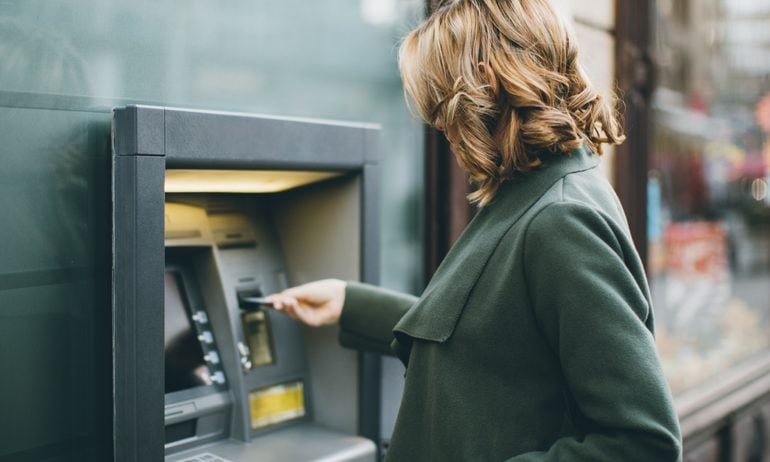How to Deposit Cash and Checks in an ATM
Look to see whether the ATM accepts deposits, stack your bills and checks, follow the prompts to insert, then verify your total.

Many, or all, of the products featured on this page are from our advertising partners who compensate us when you take certain actions on our website or click to take an action on their website. However, this does not influence our evaluations. Our opinions are our own. Here is a list of our partners and here's how we make money.
You don’t need to visit a branch bank teller to get your money where it needs to go. If you deposit cash and checks into an ATM, you can skip the hassle of working around bank business hours.
Here’s our easy guide to using an ATM to get your money into your bank account.
Here’s how to deposit cash in an ATM
1. Confirm whether you can deposit money into a particular ATM. While many bank ATMs allow withdrawals from noncustomers (often for a fee), you’ll typically need to use your own bank’s ATM system to make deposits. Your bank likely has a map of eligible nearby ATMs on its website. Some local and regional banks and credit unions belong to shared nationwide ATM networks such as Allpoint or MoneyPass, while others might give ATM fee reimbursements.
2. If you have checks to deposit, prep them by signing the back. You don’t want to hold up the line at the ATM by digging for a pen to endorse your check. If checks are the only thing you’re depositing, see if your bank offers free mobile check deposit, which lets you use your smartphone to deposit checks from anywhere, so you won’t need to queue up at a machine.
3. Insert or tap your debit or ATM card at the card reader and enter your PIN. This security step acts like a password for accessing your funds.
4. Select which account you want to deposit your cash or checks into. If you have multiple checking and/or savings accounts, the ATM will ask where you would like your cash to go.
5. If the ATM doesn’t require an envelope, stack your bills and/or checks together and insert them. Most modern ATMs from major banks have scanning technology that can differentiate between bills and checks and can detect the total amount of money you’re depositing. Many major banks allow you to insert dozens of bills and checks at a time; there’s no need to feed them in individually or fill out a deposit slip.The ATM will tell you when to insert the stack of bills and checks you want to deposit into the appropriate slot.
6. If the ATM does use envelopes, put your bills and/or checks inside and insert the envelope. You’ll be hard-pressed to find an ATM that uses envelopes for deposits these days, but if you do, you’ll have to put the bills and/or checks inside, seal the envelope, write the total on the envelope and manually enter the amount you’re depositing into the ATM. It may take a couple of business days for your funds to become available since the deposit amount must be confirmed by the bank.
7. Verify your deposit at the machine. The last step before you finish up at the ATM is to make sure it registered the correct deposit amount into the right account. The ATM will display a message asking if the total amount you deposited is accurate; you must OK it before the funds are processed into your account. If the amount is inaccurate, cancel the deposit and try again, or contact your bank if the problem persists. Should you find that the ATM deposit amount was incorrect, contact your bank as soon as possible.
8. Wait for your deposit to clear. Instantaneous access to your cash is becoming the norm, but if your bank has a waiting period, keep an eye on your accounts over the next few days to make sure the full deposit lands.
How to deposit money with an online bank
If you want to deposit cash in an online-only bank account, you may have some extra hoops to jump through. Many online banks participate in shared ATM networks, which allow customers to deposit cash without surcharges. Other options may be to deposit cash in a traditional bank account, if you have one, then electronically transfer it into your online-only bank account, or buy a money order and deposit it with your online bank mobile app.
While it may take a few more steps to deposit money into an online bank account, depositing cash or checks at an ATM is a convenient way to get your money into a traditional bank account.


